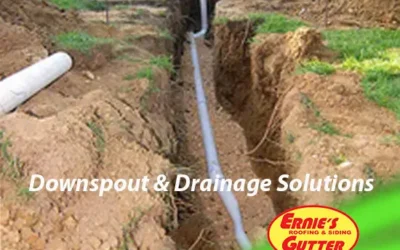The Role of Proper Planning and Preparation
Proper planning and preparation are crucial for the success of any roofing project. From initial assessment to the final inspection, each phase requires careful attention to detail to ensure the roof is installed correctly and efficiently.
Initial Assessment and Consultation
Before starting the project, a thorough assessment of the existing roof is essential. This helps identify any underlying issues that need to be addressed before the new roof is installed.
Example:
A homeowner once discovered significant water damage in the roof deck during the initial assessment. Addressing this issue beforehand prevented future leaks and structural problems.
Tip:
Schedule a professional roof inspection to identify any potential issues. This assessment should include a detailed evaluation of the roof deck, flashing, ventilation, and drainage systems.
Selecting the Right Materials
Choosing the right roofing materials is crucial for durability, aesthetics, and performance. Different materials offer various benefits, and the selection should be based on the specific needs of the home and the local climate.
Example:
In Denver, where the climate can be harsh, choosing materials that can withstand heavy snow and high winds is essential.
Tip:
Consult with a roofing professional to select materials that offer the best combination of durability, energy efficiency, and visual appeal. High-quality shingles, underlayment, and flashing are all critical components of a successful roofing system.
Budgeting and Financing
Roofing projects can be expensive, and proper budgeting is essential to avoid financial strain. Understanding the costs involved and exploring financing options can help manage the expenses.
Example:
A homeowner underestimated the cost of a roof replacement and had to halt the project midway due to insufficient funds.
Tip:
Request detailed estimates from multiple contractors and compare them. Consider financing options such as home improvement loans, lines of credit, or payment plans offered by roofing companies.
Scheduling the Project
Timing is crucial in roofing projects. Scheduling the work during favorable weather conditions can help avoid delays and ensure a smooth installation process.
Example:
A roofing project scheduled during the rainy season faced multiple delays, increasing the overall cost and inconvenience.
Tip:
Plan the project for the spring or fall when the weather is typically more predictable. Communicate with your contractor to ensure their availability aligns with your preferred timeline.
Importance of Proper Installation Techniques
The success of a roofing project heavily relies on the installation techniques used. Proper techniques ensure the roof’s longevity and performance, preventing common issues such as leaks, wind damage, and premature aging.
Correct Placement of Shingles
Shingle placement is critical to the roof’s integrity. Incorrect placement can lead to water infiltration and wind damage.
Example:
Shingles that are not properly aligned or overhanging can lift during high winds, causing significant damage.
Tip:
Follow the manufacturer’s guidelines for shingle placement. Ensure each shingle is properly aligned, overlapped, and secured with the appropriate number of nails.
Flashing Installation
Flashing is essential for sealing roof penetrations and preventing leaks. Improper flashing can lead to significant water damage.
Example:
A poorly flashed chimney caused water to seep into the attic, resulting in mold growth and structural damage.
Tip:
Use high-quality flashing materials and ensure they are installed correctly around chimneys, vents, skylights, and other roof penetrations. Regularly inspect and maintain flashing to ensure its effectiveness.
Ventilation Systems
Proper ventilation helps regulate temperature and moisture levels in the attic, preventing heat buildup and condensation.
Example:
A roof without adequate ventilation experienced excessive heat buildup, causing shingles to warp and reducing their lifespan.
Tip:
Install a balanced ventilation system that includes both intake and exhaust vents. Ridge vents, soffit vents, and gable vents work together to promote continuous airflow through the attic.
Drip Edge and Starter Shingles
The drip edge and starter shingles play a vital role in directing water away from the roof and preventing leaks.
Example:
Skipping the drip edge installation led to water damage in the fascia and soffit areas of a home.
Tip:
Install drip edges along the eaves and rakes of the roof. Use starter shingles to provide a solid foundation for the first row of shingles, ensuring proper water runoff.
Post-Installation Inspection and Maintenance
A thorough inspection after installation ensures the roof is installed correctly and meets all quality standards. Regular maintenance helps extend the roof’s lifespan and performance.
Post-Installation Inspection
After the roof installation is complete, a detailed inspection helps identify any potential issues that need to be addressed.
Example:
An inspection revealed several loose shingles and improperly sealed flashing, which were promptly fixed to prevent future problems.
Tip:
Conduct a comprehensive inspection of the entire roofing system, including shingles, flashing, ventilation, and drainage. Address any issues immediately to avoid costly repairs down the line.
Regular Maintenance
Routine maintenance is essential for keeping the roof in optimal condition and preventing minor issues from becoming major problems.
Example:
Regular cleaning of gutters and removal of debris helped prevent water buildup and roof damage in a homeowner’s property.
Tip:
Schedule regular maintenance tasks such as gutter cleaning, debris removal, and roof inspections. Trim overhanging branches to prevent damage from falling limbs and debris accumulation.
Enhancing Roof Longevity
Implementing additional measures can further enhance the longevity and performance of your roof, ensuring it provides reliable protection for years to come.
Applying Protective Coatings
Protective coatings can extend the life of your roof by providing an additional barrier against the elements.
Example:
A roof coating helped a homeowner’s roof withstand harsh UV rays and heavy rainfall, reducing wear and tear.
Tip:
Consider applying reflective or waterproof coatings to your roof. These coatings can reduce heat absorption, prevent water infiltration, and extend the roof’s lifespan.
Installing Roof Guards
Roof guards, such as snow guards and gutter guards, can prevent damage from snow accumulation and debris.
Example:
Snow guards helped prevent ice dams and snow buildup on a homeowner’s roof, reducing the risk of leaks and damage.
Tip:
Install snow guards to prevent ice and snow from sliding off the roof. Gutter guards help keep gutters clear of debris, ensuring proper water drainage.
Conclusion
Roof installation is a significant investment that requires careful planning, quality materials, and professional expertise. By avoiding common mistakes and following the advanced tips provided in this guide, you can ensure a successful and long-lasting roof installation. At Ernie’s Gutter, we are committed to delivering top-notch roofing solutions tailored to your specific needs. Trust our experienced team to provide reliable, high-quality roofing services that protect and enhance your home.
Additional FAQs
17. What should I look for in a roofing contractor?
Look for a contractor with a solid reputation, proper licensing and insurance, positive customer reviews, and a comprehensive warranty on their work.
18. How do I choose the right roofing material for my home?
Consider factors such as your local climate, budget, desired aesthetics, and the material’s durability and lifespan. Consult with a roofing professional to make an informed decision.
19. What is the average lifespan of a new roof?
The lifespan of a roof depends on the materials used and the quality of installation. Asphalt shingles typically last 20-30 years, while metal, tile, and slate roofs can last 50 years or more.
20. How can I prevent ice dams on my roof?
Proper insulation and ventilation are key to preventing ice dams. Ensure your attic is well-insulated and ventilated to maintain a consistent temperature and prevent ice buildup.
21. What should I do if my roof is damaged during a storm?
Contact a professional roofing contractor immediately to assess the damage and perform necessary repairs. Document the damage for insurance purposes and avoid making temporary fixes that could worsen the situation.
22. Is it necessary to remove the old roof before installing a new one?
While it is possible to install a new roof over the old one, it is generally recommended to remove the old roof to inspect for underlying damage and ensure proper installation of the new materials.
23. How can I improve my roof’s energy efficiency?
Use reflective roofing materials, proper insulation, and ventilation to improve energy efficiency. Consider installing solar panels or a cool roof coating to reduce heat absorption.
24. What are the signs that my roof needs to be replaced?
Signs include missing or damaged shingles, leaks, sagging, excessive granule loss, and visible wear and tear. If your roof is nearing the end of its expected lifespan, consider a professional inspection to determine if replacement is necessary.
By following these guidelines and working with experienced professionals, you can ensure a successful and stress-free roof installation. Trust Ernie’s Gutter for all your roofing needs and experience the peace of mind that comes with quality workmanship and reliable service.
Contact Ernie’s Gutter
For expert roofing services and to schedule a consultation, contact us today.
Phone: 720 346 ROOF (7773)
Website: Ernie’s Gutter









